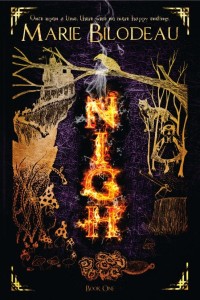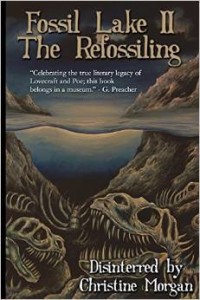Ever have one of those moments where you’re character gets lost in the turmoil of their own head – arguing themselves into circles that are vaguely reminiscent of filthy water swirling down a drain? Nothing ever gets resolved, and the character just looks like they’re passively wallowing in their own little “woe is me” pity party. I have. On more than one occasion. It was not pretty.
Sure, I could have put someone else in the scene for the character to talk to. Two people sitting around talking about their problems could be interesting if they have different views, but let’s face it, while talking it out might be healthy, it’s can also be boring.
One of my favorite ways to keep this from happening is to take that personal, internal conflict and externalize it.
Enter the metaphor.
As you can imagine, I’m not talking about the typical use your English teacher might bring up where a woman’s smile is a sunrise. I’m talking about when a brawl stops being just a knock-down drag-out between a protagonist and antagonist and becomes an argument between the two sides of the protagonist’s inner turmoil.
This is most easily seen in film, where internal conflict has to be externalized since we don’t get any of that nifty expository internal narrative that we do from books. Instead, we get Hellboy fighting an elemental for ten minutes without taking a scratch, but starts bleeding when one of those normal people he just saved throws a rock at his face and calls him a freak. The elemental was a fun night out, but the guy with a rock cuts to his desperate desire to fit into a world he pretty much knows he never will. That one action stands in for the argument.
I was watching the new Daredevil and reached the inner conflict that seems part and parcel with any super-hero – that of staying a good person when faced with the need to do violence. The struggle to retain one’s humanity when faced with inhuman circumstances, and the aftermath of facing that struggle, might be one of the oldest internal conflicts in literature and shows up in every genre we have devised. So, how do we keep a tried and true conflict from sounding old and stale? We come up with a nifty metaphor to stand in for one guy talking to himself or his best friend. In a fantasy, the hero might find it difficult to use his sword, even at the possible cost of losing those he loves. In SF, maybe it’s a heated argument about purchasing a worn-out old spaceship. The possibilities are endless.
Not only does this get the character out of their own heads, and liven the argument (so to speak), but also has the effect of giving those action scenes that keep the story moving more depth and meaning. Sure, the pacing might be slow at that one point in the middle of the book, but while just slapping a fight scene in there might get things moving, it would have so much more impact if it pressed a button somewhere inside the character, putting pressure on an already tense situation eating away at them.
Of course, I’m not saying that every conflict within a story should harken back to some internal argument the character is having with him or herself. Some conflicts are by necessity strictly plot driven, but I’m one of those writers who sincerely believes that character is where the story lies. The more you can infuse the characters into the fights they get into, the arguments they have, the hard decisions they face, the better off the story is.




